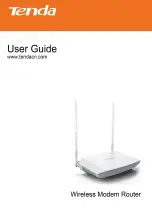
Changing a local service’s properties
Earlier, we discussed about the five property settings that each of the local services would have.
Here, we’ll show you how to change a local service’s properties and what the options are.
To change a local service’s properties:
1. Open the Bluetooth Configuration Panel by right-clicking the
Bluetooth Tray
icon on the Windows system tray. Select
Setup
and then select
Configuration
from the submenu. The
Bluetooth
Configuration Panel
is displayed.
2. Click
the
Local Services
tab.
3. Double-click the service name.
4. Select the appropriate boxes or leave them cleared, depending
on what you want BTW to do.
Startup:
enabled by default. When enabled, it starts the
service when BTW initializes. If
Startup
is disabled, you can
still start the service manually.
Note:
To start the service manually at a later time, simply right-click the
service and select
Start
from the pop-up menu.
Authorization:
disabled by default. When enabled, it requires
confirmation by the server operator before a remote device is
allowed to connect to this service.
Authentication
is
automatically enabled when
Authorization
is selected.
Encryption:
disabled by default. When enabled, it encrypts
data exchanged by the Bluetooth server and the Bluetooth
client. Encryption applies ONLY to the Bluetooth connection.
Data transmitted to/from a modem, Local Area Network, etc,
is NOT affected by this setting.
Authentication
is automatically
enabled when
Encryption
is enabled.
Authentication:
disabled by default. When enabled, it
requires that the client and server exchange a passkey or
Link Key before a connection is established. Devices are
paired automatically when authentication is complete.
Service Name:
enter a service name (no more than 99
alphanumeric characters) in this field. In most cases, a
service name is supplied by default. However, in
environments where there is more than one device of the
same type or one device provides more than one service of
the same type (this is only possible with the Bluetooth Serial
Port service), the service name can be customized.
5. Click
OK
.
To stop a local service, simply right-click the service and select
Stop
from the pop-up menu.
Stopped services are no longer available for use by clients.
You may also see a summary of information about each local service from Windows Explorer. To
do this, open your Windows Explorer. With
Local Device
selected, click the
View
menu, then
select
Details
. You will find the following basic information:
Service:
the name of the service
30











































